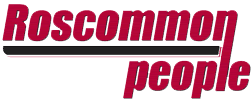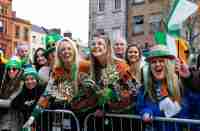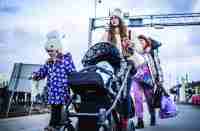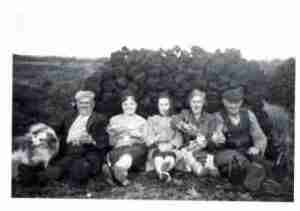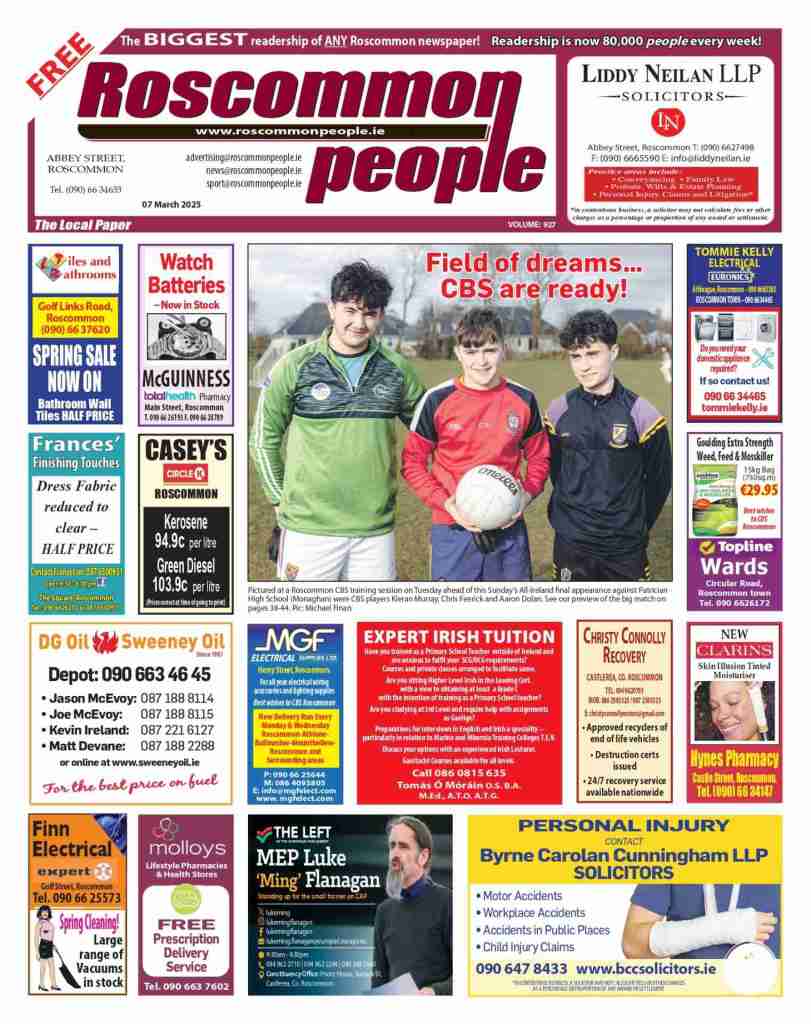A three-part series by TONY CONBOY
Boyle-based author and historian Tony Conboy has penned an affectionate series of articles on memories of his youth in his native Castlecoote. The articles revolve around the local shop – Hughes’ – and to a lesser extent the adjoining Thatch Bar. A slice of social history, this series will be fascinating reading for people from the area, and further afield. Part 2 next week.
Part 3: Hughes’ staff – ‘Shop Boys’ and ‘Shop Girls’
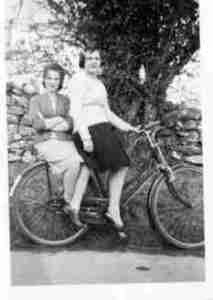 Like all such establishments, there was a considerable turnover of staff. This was part of the process with shops and bars throughout the country. The ‘shop boy’ (girls – and there were many – were rarely referenced as ‘shop girls’) was a regular migrant member for an area. Hughes’ shop had employees who were nearly always from a distance away and we got to know them very well. Most of them came from Galway county. I have talked to a number of them in the lead-up to this essay and they invariably had very good memories of the happy times they spent working in Hughes’ where they were treated well.
Like all such establishments, there was a considerable turnover of staff. This was part of the process with shops and bars throughout the country. The ‘shop boy’ (girls – and there were many – were rarely referenced as ‘shop girls’) was a regular migrant member for an area. Hughes’ shop had employees who were nearly always from a distance away and we got to know them very well. Most of them came from Galway county. I have talked to a number of them in the lead-up to this essay and they invariably had very good memories of the happy times they spent working in Hughes’ where they were treated well.
Jimmy Coyne – ‘Shop Boy’
Jimmy Coyne, who was a pivotal contact, came there from County Galway in 1953 and stayed for a five-year stint. I had met up with him a number of times in later years as he now lives in Sligo. When I phoned him near Christmas 2020 we talked for nearly an hour as we rolled back the decades. Jimmy had a clear and detailed memory of that period of his life. Though he had to work long hours at low pay (as was the case everywhere) he held his employers in very high regard.
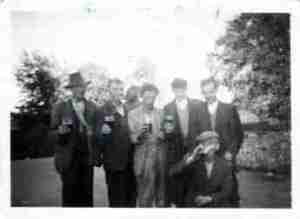 He was just fourteen when he decided to leave school and his father asked a teacher of his in Portumna if he might get him into a business premises there. The teacher enquired but there was no position just then and asked Jimmy and his father if he would go to Castlecoote in Roscommon instead. His mother asked if it was a Catholic house. The teacher was David Frawley, a member of the Frawley family from Fuerty. A week or so later Mattie Hughes collected his new ‘shop boy’ and brought him the considerable distance then to Castlecoote. Arriving late at his new home he relished his cup of Bournvita and started the first chapter of a life away from home, his mother having been assured that Hughes’ was a good Catholic house. The following Sunday Nellie Hughes gave him her bicycle and two shillings to go to the film matinee in Roscommon town.
He was just fourteen when he decided to leave school and his father asked a teacher of his in Portumna if he might get him into a business premises there. The teacher enquired but there was no position just then and asked Jimmy and his father if he would go to Castlecoote in Roscommon instead. His mother asked if it was a Catholic house. The teacher was David Frawley, a member of the Frawley family from Fuerty. A week or so later Mattie Hughes collected his new ‘shop boy’ and brought him the considerable distance then to Castlecoote. Arriving late at his new home he relished his cup of Bournvita and started the first chapter of a life away from home, his mother having been assured that Hughes’ was a good Catholic house. The following Sunday Nellie Hughes gave him her bicycle and two shillings to go to the film matinee in Roscommon town.
‘Shop Boys’ like Jimmy traversed the country and were part of the communities in which they then lived.
They stayed in the premises and this room and board was the near total payment for their work.
Soon after he arrived, a colleague, Miss Larkin, took him on her bicycle up to Galvins’ where, as she said: “There are boys there your own age to mix with”. Jimmy himself became a very popular young man in the area. Fuerty was an active GAA club, football mostly, but also junior hurling which suited him more. Coming from Galway he was a valued member of the Fuerty junior hurling team.
It was a period of mass emigration and eventually in ’59 Jimmy joined some of his Castlecoote friends, Mulherns and Galvins, and took the boat to England. He got a job ‘on the buses’ in Birmingham. His first period in England was short and he returned to a post in Tullamore, arranged by Carmel Hughes. He returned to England a few years later but was enticed home to a position with the emerging supermarket group Spar in 1968. This was to be his life from then and he eventually settled in Sligo town. Jimmy ended his contribution to me by commending the positive start he got in Hughes’ which motivated him for a long life in business subsequently.
In referencing emigration of the 1950s, nearly every house had members who emigrated. Some Galvins went to Manchester, Wards to Nottingham, Conboys to London, and Neilans to New Jersey. As a boy I was present at an ‘Emigration Wake’ when, in the late ‘50s, the greater part of the McGuire family, including parents, left the village for Melbourne, Australia.
I contacted Anne (from Creggauns, near Creggs) in Manchester where she had married Martin Lavin from Sligo and spent most of her life there. Anne was the senior one of the three Cunniffe sisters who worked in Hughes’ over a period. After Anne was Lizzie and then Sally. Anne’s time in Hughes’ overlapped with that of Jimmy Coyne. She too had good memories of ‘The Thatch Bar’ and the clientele who were customers there, including my own father. She had some ‘snaps’ from that time of both employees and customers. Getting a picture taken then was a bit of an event but Anne still had them after sixty years. She has not forgotten her home place and (before Covid) visited regularly. Sally worked in Castlecoote from ’68 to ’70, Lizzie was there from ’59 to ‘62. Lizzie and Sally now live in County Galway.
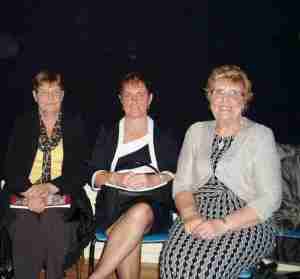 The really busy times in ‘The Thatch Bar’ included the Friday evening when the lads from Farrell’s Mill, armed with their week’s pay, crowded into the bar to slake their thirst. St. Stephen’s Day and St. Patrick’s Day were special days. St. Stephen’s had its local and visiting ‘Wren Boys’ and also the locals home from many locations in England. Occasionally there might be tune from Joe Reddington or Johnny Tarpey. A local play group with John Dunne and Leo Featherstone performing in the Hibernian Hall on the New Road would also be reflected in ‘The Thatch’. So too would visiting play groups from Dublin, known as ‘Fit Ups’. Around the 1960s it was the annual dance Carnival across the bridge that brought the extra crowd.
The really busy times in ‘The Thatch Bar’ included the Friday evening when the lads from Farrell’s Mill, armed with their week’s pay, crowded into the bar to slake their thirst. St. Stephen’s Day and St. Patrick’s Day were special days. St. Stephen’s had its local and visiting ‘Wren Boys’ and also the locals home from many locations in England. Occasionally there might be tune from Joe Reddington or Johnny Tarpey. A local play group with John Dunne and Leo Featherstone performing in the Hibernian Hall on the New Road would also be reflected in ‘The Thatch’. So too would visiting play groups from Dublin, known as ‘Fit Ups’. Around the 1960s it was the annual dance Carnival across the bridge that brought the extra crowd.
Bridie Gannon was the bookkeeper from Abbeyknockmoy in County Galway. She too emigrated to England. I assume that she had a regular and clear input to the Conboy ‘shop book’.
Myra Kelly was also from near Creggs and shared her memories of Hughes’, which overlaid those of Anne. She met and married Mickie McCormack of Fuerty.
Josie Kelly, also from Creggauns near Creggs, married Tom Joe Dillon of Fuerty. Her sister Mary and brother Kevin were prominent Irish dance teachers and great friends of my sister Francey. Josie shared her time there with Maura Ward from around Kilbegnet.
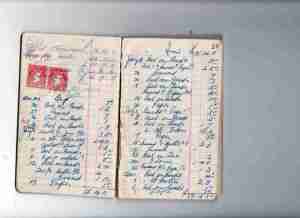 Another lady to get married from Hughes’ was Myra Dempsey who married Jack Farrell who was a member of the local Farrell’s mill family. They went on to continue in that business in Mountbellew.
Another lady to get married from Hughes’ was Myra Dempsey who married Jack Farrell who was a member of the local Farrell’s mill family. They went on to continue in that business in Mountbellew.
In the early 1950s the personnel included Madeline Larkin who was the apple of many a local man’s eye then. She came from Kiltormer and was in Hughes’ circa 1953.
Around that time, in ‘The Thatch’ also, was Phil Regan from Athleague. She too went to England.
There was also a young lady named Reenie Calligy from Laurencetown near Ballinasloe in the early ‘60s and we see her in pictures with Lizzie Cunniffe.
Apart from Jimmy the only other male shop boys were Jim or Tim Murray who Jimmy Coyne associates with a Jew’s Harp and a Tim Finnerty from earlier.
Those involved with the farming side of things was Paddy Dowd, then Jim Meally. Mickie Ward remembers handing up the thatch to Jim when roof repairs ensued. Mike Gately was another farm-hand and he too emigrated to England. He was from Castlestrange. His sister Marie was the housekeeper in the house.
Jim Neilan, who lived across the field from the bar, was an ever-present in that vicinity for years. He tramped the worn grass path to Hughes’ house for his breakfast and did whatever odd jobs needed to be done. One of them was in collecting the empty bottles and washing them as Hughes’, like many bars, ‘bottled’ their own labelled stout. Jimmy Coyne was the main bottler, helped by Jim. Jim Neilan regularly insisted on being a ‘quality control taster’ for the stout being bottled. Now health and safety was well in the future in terms of hygiene and cleanliness but it seemed that people adapted to the conditions and created their own resistance to these threats of the time. Jim Neilan lived and died in the lodge gatehouse at the entrance to Castlecoote House. He is buried to the right of the main gate in Fuerty and is buried with his Neilan connections.
Acknowledgements
I wish to thank all those who responded to my queries and helped me relay, hopefully a subjective, if incomplete, account of the Hughes’ shop and bar in the 1950s and early ‘60s.
I thank Anne Hughes Cunningham, Michelle Hughes-Walshe and Mamie Delaney, all members of the extended Hughes family. My thanks also to James Moran for all his assistance.
I thank Anne and Lizzie Cunniffe for evocative pictures from that time. I also thank John Kerrigan for the important local picture of ‘The Thatch Pub’ and PJ Naughton for the aerial picture from 1974.
